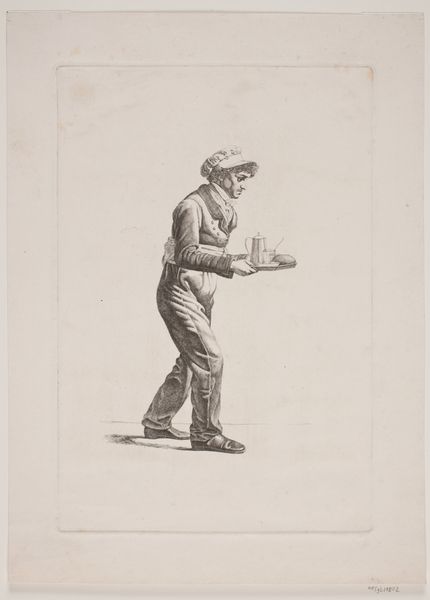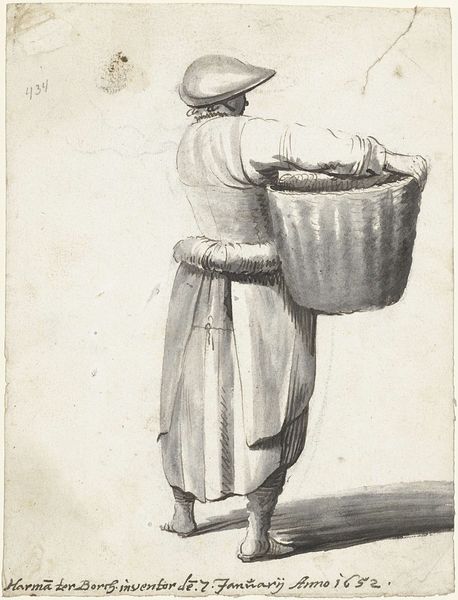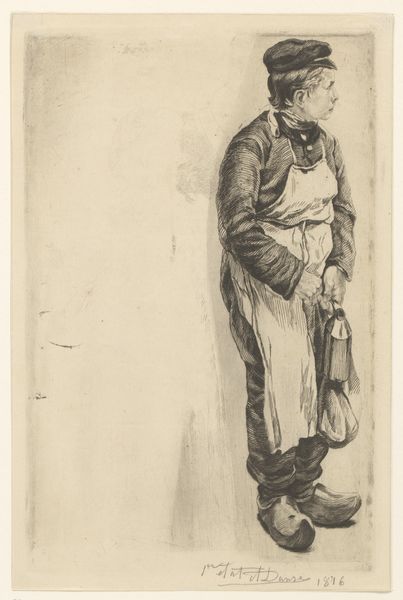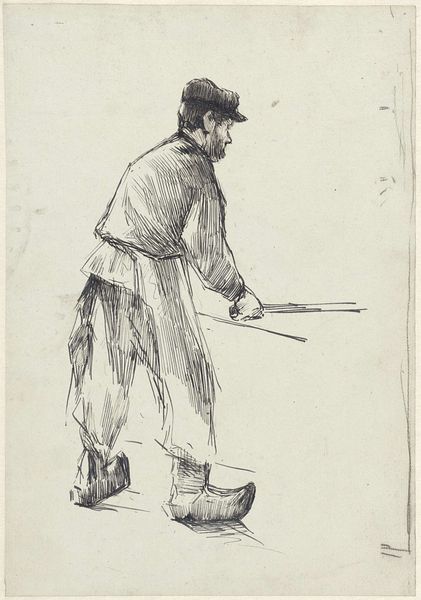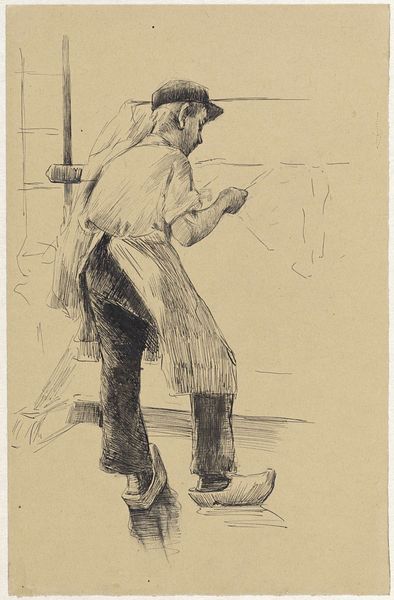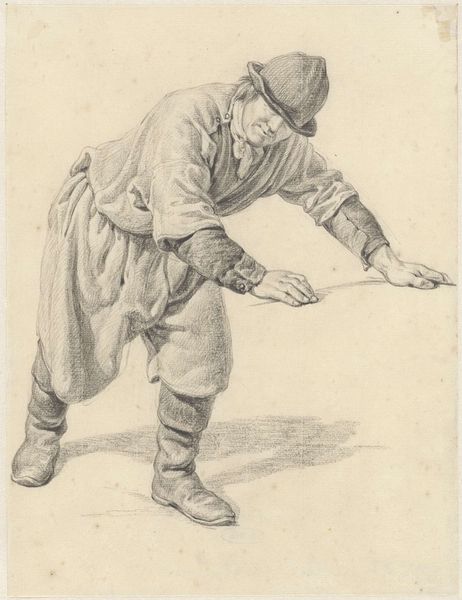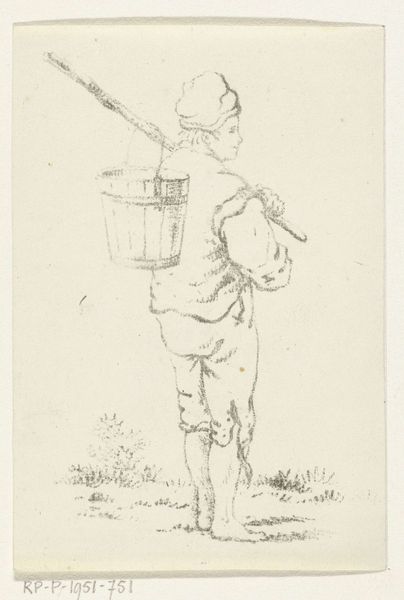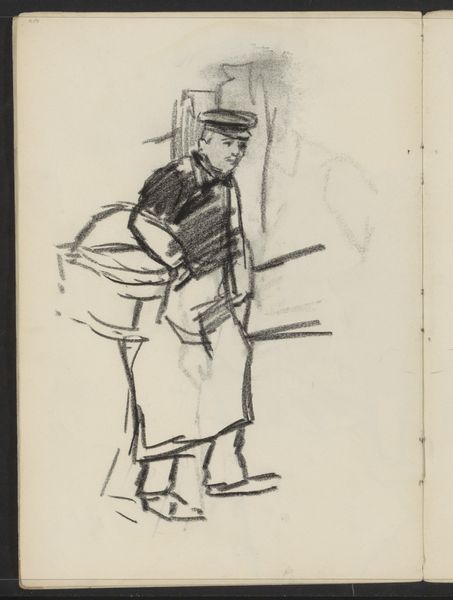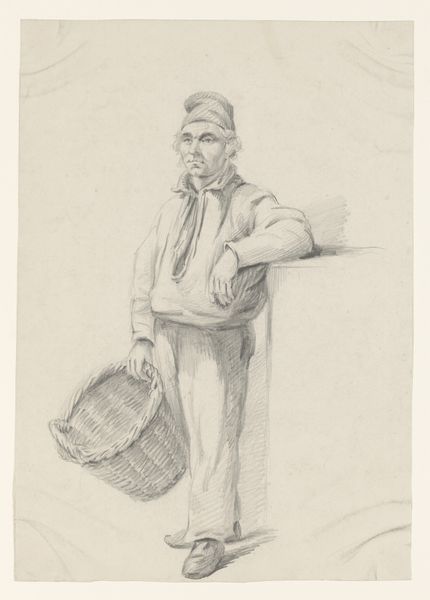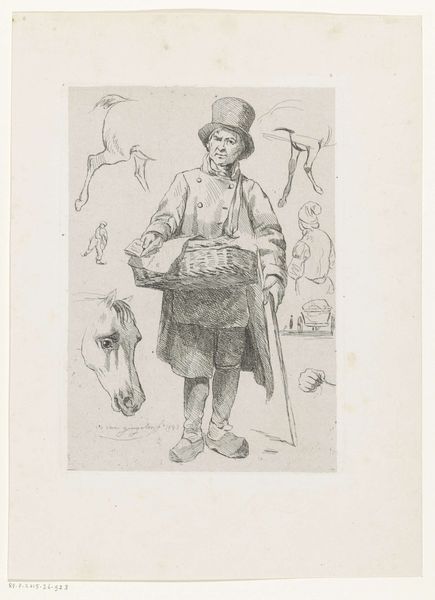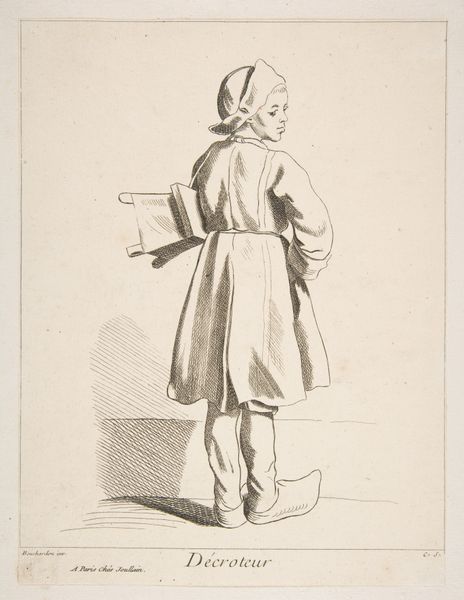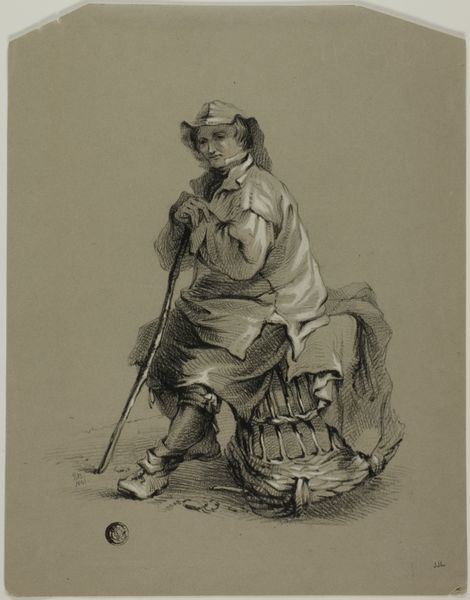
drawing, ink
#
portrait
#
drawing
#
pencil sketch
#
ink
#
genre-painting
#
realism
Dimensions: height 298 mm, width 210 mm
Copyright: Rijks Museum: Open Domain
Editor: This drawing, titled "Fabrieksjongen" or "Factory Boy," was created between 1868 and 1892 by Anthon Gerhard Alexander van Rappard. It's rendered in ink and possibly pencil, giving it a stark, almost journalistic quality. It depicts a young boy in what looks like a factory setting. What jumps out at me is the boy’s stoic posture – almost resigned. What do you see in this piece? Curator: It's interesting that you mention a journalistic quality. Van Rappard was indeed concerned with social issues, a characteristic of Realism, and often depicted working-class life. Consider the period – the late 19th century was a time of rapid industrialization, and artists began to turn their attention to the lives of those impacted, particularly the working class. He wasn’t merely documenting. What social narratives might the artist have been aiming to engage with through such work, do you think? Editor: I guess, looking at it again, I'm more struck by the vulnerability in his stance. It's a political statement showing children working. The scale, and the detail given to the clothing like his wooden shoes and the smock apron seem intentional to provoke some emotion for children being employed at such a young age. Curator: Precisely. And the drawing’s circulation matters. Consider where this image might have been displayed or reproduced at the time. Was it meant for a wealthy art-collecting audience, to perhaps elicit sympathy or guilt? Or, maybe, was it shared among a working-class community to foster solidarity and fuel calls for change? Those venues shape reception and imbue the artwork with a purpose, intentional or otherwise. Editor: So, thinking about the original audience helps to understand the piece further. I initially saw sadness, but knowing this context reveals that it's meant as social commentary. Curator: Absolutely. And remembering that the artwork’s impact changes as it moves through history. What it means today, in our contemporary society, is likely very different from what van Rappard originally intended.
Comments
No comments
Be the first to comment and join the conversation on the ultimate creative platform.
